Today’s ride was recommended by Leo Huang (黃博駿), a 31-year-old resident of the Sijhih District (汐止) in New Taipei City.
Five years ago, Huang, then a dedicated meat-lover with plenty more beef, pork and seafood dishes left on his “culinary bucket list,” challenged himself to give up meat.
That was hard enough, he says, though he is now part-owner of a vegetarian restaurant that focuses on “showing meat-eaters that tasty alternatives are available.” His new challenge for this year is the Tour of the Dragon, a 255km bike race traversing four mountain passes in Bhutan, all at high altitude.
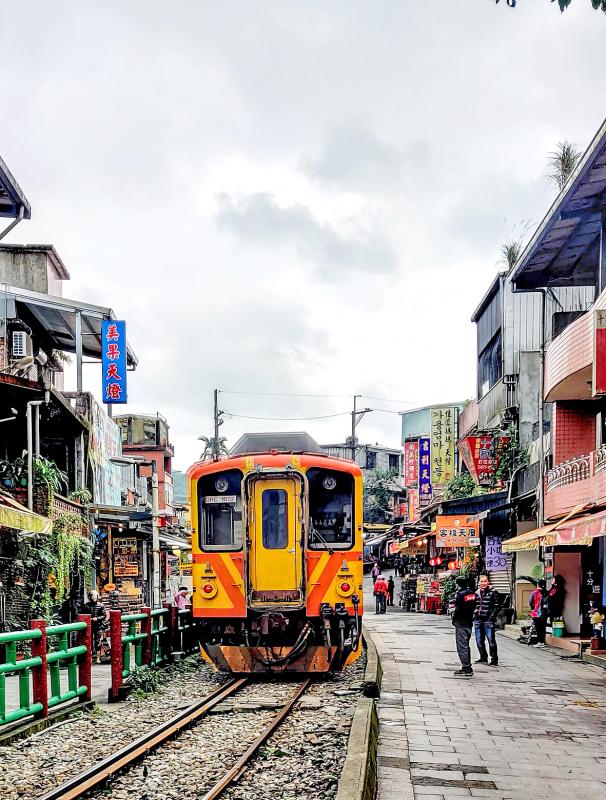
Photo: Mark Caltonhill
This may well prove to be a little harder than cutting meat from his diet. In 2019, just 37 people finished. Moreover, when Huang decided to attempt this event last year, he didn’t own a bicycle and hadn’t ridden a YouBike further than the nearest MRT station.
HISTORIC CEMETERY
We arrange to meet near the top of Fude Cemetery (富德公墓). My climb from central Taipei takes me past thousands of graves, such as those of Yulbars Khan, a Uyghur chieftain who fought with the Chinese Nationalist Party (KMT) during the Chinese Civil War and was later appointed Governor of Xinjiang Province; Pai Chung-hsi (白崇禧), one-time warlord and later Chiang Kai-shek’s (蔣介石) defense minister; and, until his remains were recently moved to his hometown in Yilan, that of Japanese-era Taiwan nationalist Chiang Wei-shui (蔣渭水), to whom a memorial still stands.
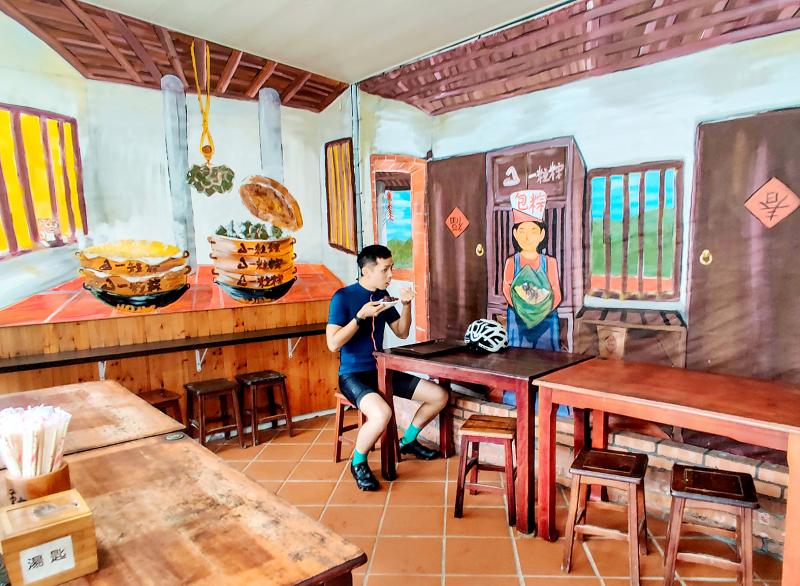
Photo: Mark Caltonhill
We can probably spend all day exploring but, with Bhutan’s mountain climbs less than nine months away, Huang has a more strenuous ride in mind. We descend to Highway 106 running alongside Jingmei River (景美溪) to Shenkeng (深坑) and then Shihding (石碇).
Finding the locally renowned restaurant Yilizong (一粒粽) is open and has vegetarian sticky-rice options, Huang takes a snack among the murals depicting a traditional Taiwan eatery.
In the late 19th century, Shihding was an important stop on the southern section of the Taipei-to-Yilan trail. And, even though traffic now shoots past high overhead on National Highway 5 (also called the Chiang Wei-shui Memorial Freeway), there is an Old Street catering to tourists. The township’s name, meaning “stone anchor,” further alludes to the barges that took agricultural produce and, later, coal downstream.
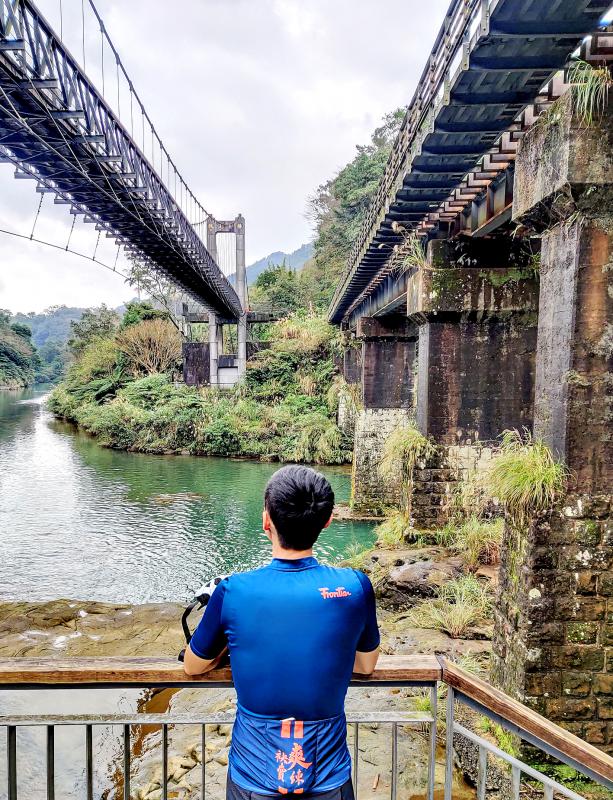
Photo: Mark Caltonhill
JINGTONG’S ‘BLACK GOLD’
We turn back to follow the 106 as it climbs eastward beside the tributary Yongding River (永定溪), and on to Jingtong (菁桐), since it is steady ascents that Huang must practice. Asked if he expects to be among this year’s three dozen finishers, he says that this is not really the point of his participation, which is more about process, about the journey, about self-discovery.
Like Shihding, Jingtong took off with the discovery of coal deposits early in the period of Japanese rule. This “black gold” led to construction in the 1920s of the Pingsi Railway Line, which rises more than 300 meters over the 13 kilometers from Sandiaoling (三貂嶺) on the Eastern Line. Jingtong is the terminal stop and its sole remaining original Japanese-era station building.
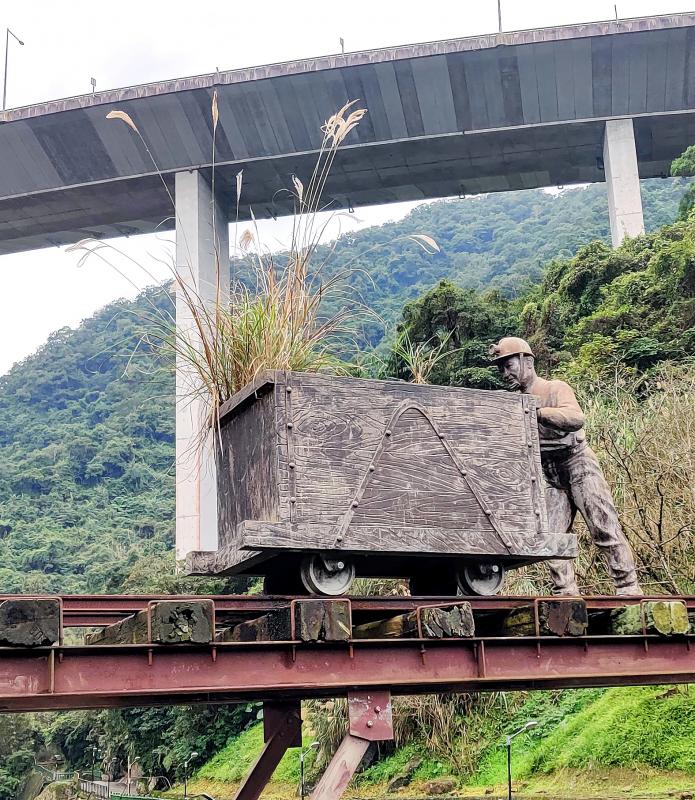
Photo: Mark Caltonhill
There is a visitor center that introduces the area’s history and culture, but more popular with most tourists seems to be the station, Old Street and coal industry buildings as backdrops for selfies.
PINGSI STATION
Next up is Pingsi (平溪) Station. I should perhaps confess here that for much of my time in Taiwan I thought Pingsi was the river’s name, a self-describing “Flat River.” But, there again, for a few years I thought that Keelung River (基隆河) in Taipei must run eastward to empty into the sea at Keelung Harbor.
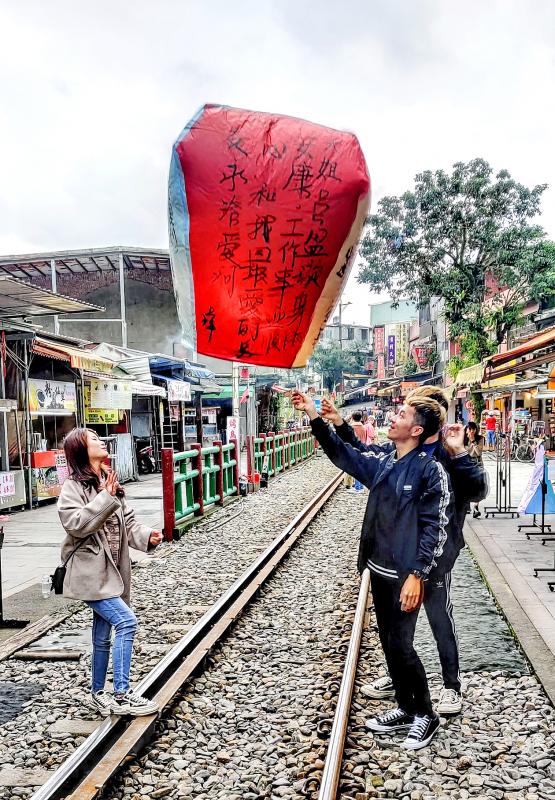
Photo: Mark Caltonhill
Both wrong. This is, in fact, the same Keelung River, here running eastward from Jingtong until it reaches Rueifang District (瑞芳), less than 2 kilometers from the sea, where it abruptly swings northward and then westward for over 40 kilometers, before joining the Tamsui River and emptying into the ocean on the northwest coast.
Pingsi’s name, Huang reads from one of the numerous information boards, actually derives from the fact that both above and below this point the river is steeper and more turbulent, and so is a “tranquil river” at Pingsi. My bad.
SKY LANTERNS
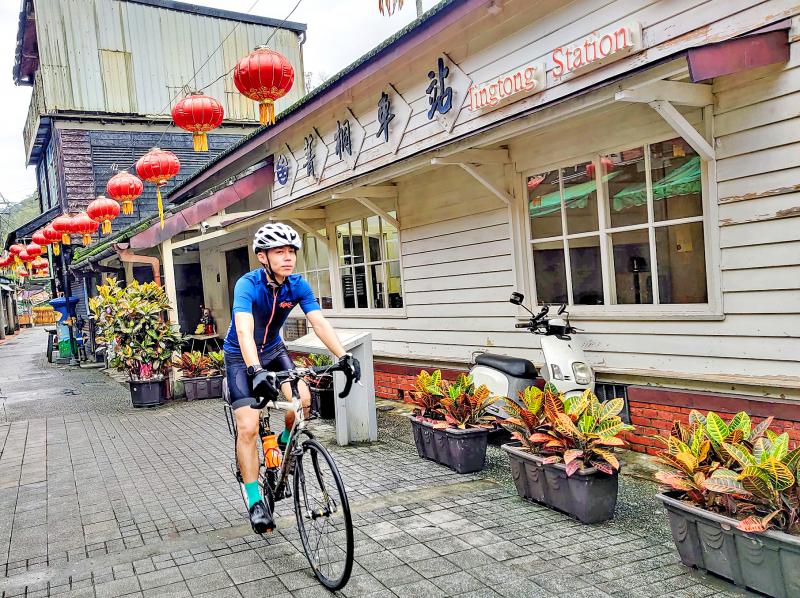
Photo: Mark Caltonhill
Pingsi’s economy in the post-coal era is based on tourism but, unlike just about everywhere from Shenkeng and Yonghe to Taichung and Tainan, has nothing to do with food. Rather, it involves buying a paper lantern, writing auspicious words on the sides, lighting some kerosene-soaked paper underneath and watching it ascend into the sky.
Various origins are offered as to why this practice, said to have begun as a system of military signaling by Zhuge Liang (諸葛亮) in third-century China, is associated with Pingsi. According to the visitor center, bandits roamed this area in earlier centuries causing local people to hide in the afforested hillsides, who then used lanterns to let each other know when the coast was clear.
In any case, tens of thousands of these lanterns are launched around Lunar New Year, and even on a soggy winter Monday they can be seen rising every few minutes from the valley’s various townships. Huang, who is active in a number of environmental groups, says that volunteers spend weeks after New Year collecting the myriad lantern corpses from trees and power lines throughout the valley and beyond.
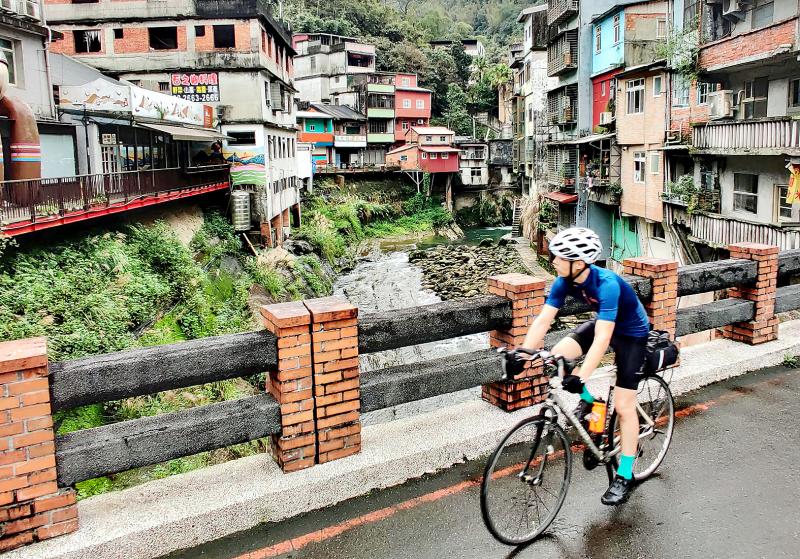
Photo: Mark Caltonhill
Similar lanterns made of biodegradable materials have been developed in recent years, Huang says, but, looking in local stores for an example to show me, he couldn’t find any.
SHIHFEN’S OLD STREET
Three stations further down is Shihfen (十分), which has a mandatory Old Street but similarly lacks any tofu, soymilk or sun cake. Instead, it relies on Taiwan’s largest cascade waterfall to attract visitors.
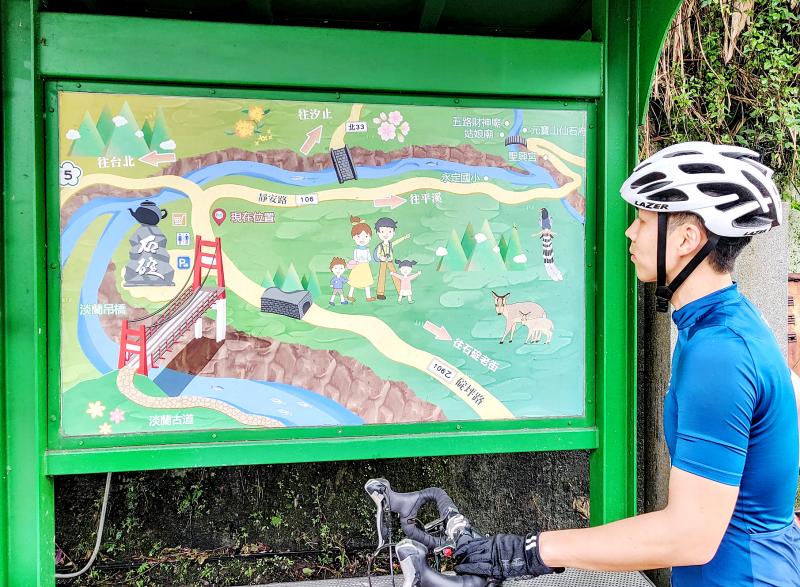
Photo: Mark Caltonhill
Despite having lived just 40 kilometers away for many years and written numerous travel articles for various publications, this is my first visit. Huang chose it as the destination of our ride, remembering a family visit during his school years spent living with his grandmother in Yilan County.
Fortunately, the access road that until recently was privately owned has been acquired by New Taipei City so admission is now free, meaning this magnificent conjunction of waterfall in full after-rain majesty with historic coal-industry structures and trains passing nearby, is finally worth a visit even for this old Scrooge.
Mark Caltonhill bikes, and writes, and writes about bikes.
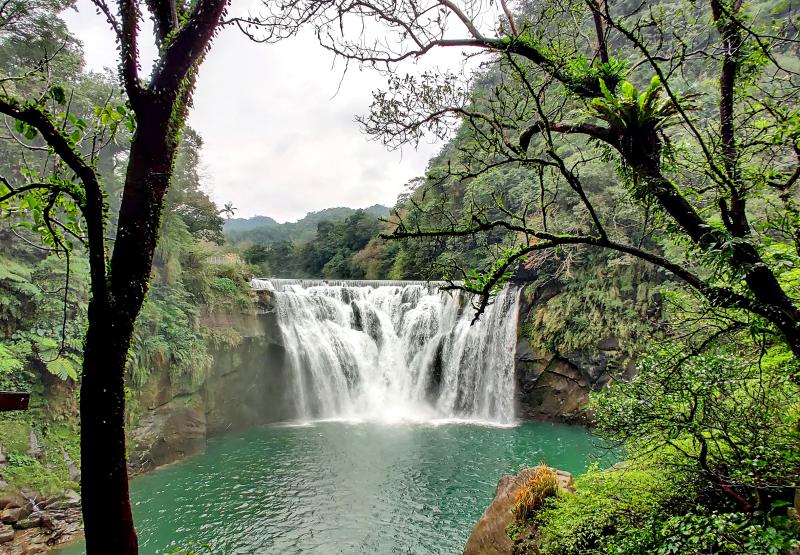
Photo: Mark Caltonhill
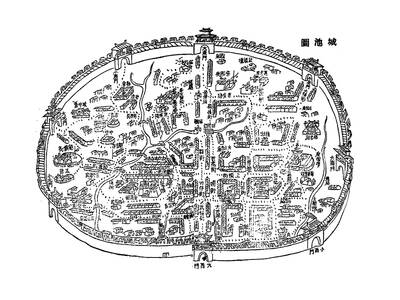
May 26 to June 1 When the Qing Dynasty first took control over many parts of Taiwan in 1684, it roughly continued the Kingdom of Tungning’s administrative borders (see below), setting up one prefecture and three counties. The actual area of control covered today’s Chiayi, Tainan and Kaohsiung. The administrative center was in Taiwan Prefecture, in today’s Tainan. But as Han settlement expanded and due to rebellions and other international incidents, the administrative units became more complex. By the time Taiwan became a province of the Qing in 1887, there were three prefectures, eleven counties, three subprefectures and one directly-administered prefecture, with

President William Lai (賴清德) yesterday delivered an address marking the first anniversary of his presidency. In the speech, Lai affirmed Taiwan’s global role in technology, trade and security. He announced economic and national security initiatives, and emphasized democratic values and cross-party cooperation. The following is the full text of his speech: Yesterday, outside of Beida Elementary School in New Taipei City’s Sanxia District (三峽), there was a major traffic accident that, sadly, claimed several lives and resulted in multiple injuries. The Executive Yuan immediately formed a task force, and last night I personally visited the victims in hospital. Central government agencies and the
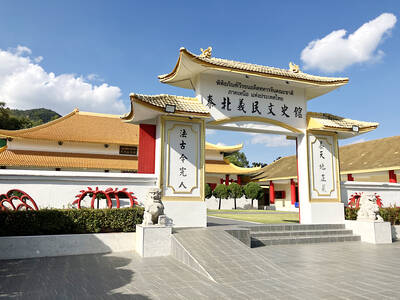
Among Thailand’s Chinese Nationalist Party (KMT) villages, a certain rivalry exists between Arunothai, the largest of these villages, and Mae Salong, which is currently the most prosperous. Historically, the rivalry stems from a split in KMT military factions in the early 1960s, which divided command and opium territories after Chiang Kai-shek (蔣介石) cut off open support in 1961 due to international pressure (see part two, “The KMT opium lords of the Golden Triangle,” on May 20). But today this rivalry manifests as a different kind of split, with Arunothai leading a pro-China faction and Mae Salong staunchly aligned to Taiwan.
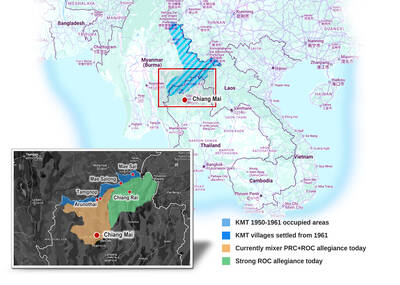
As with most of northern Thailand’s Chinese Nationalist Party (KMT) settlements, the village of Arunothai was only given a Thai name once the Thai government began in the 1970s to assert control over the border region and initiate a decades-long process of political integration. The village’s original name, bestowed by its Yunnanese founders when they first settled the valley in the late 1960s, was a Chinese name, Dagudi (大谷地), which literally translates as “a place for threshing rice.” At that time, these village founders did not know how permanent their settlement would be. Most of Arunothai’s first generation were soldiers